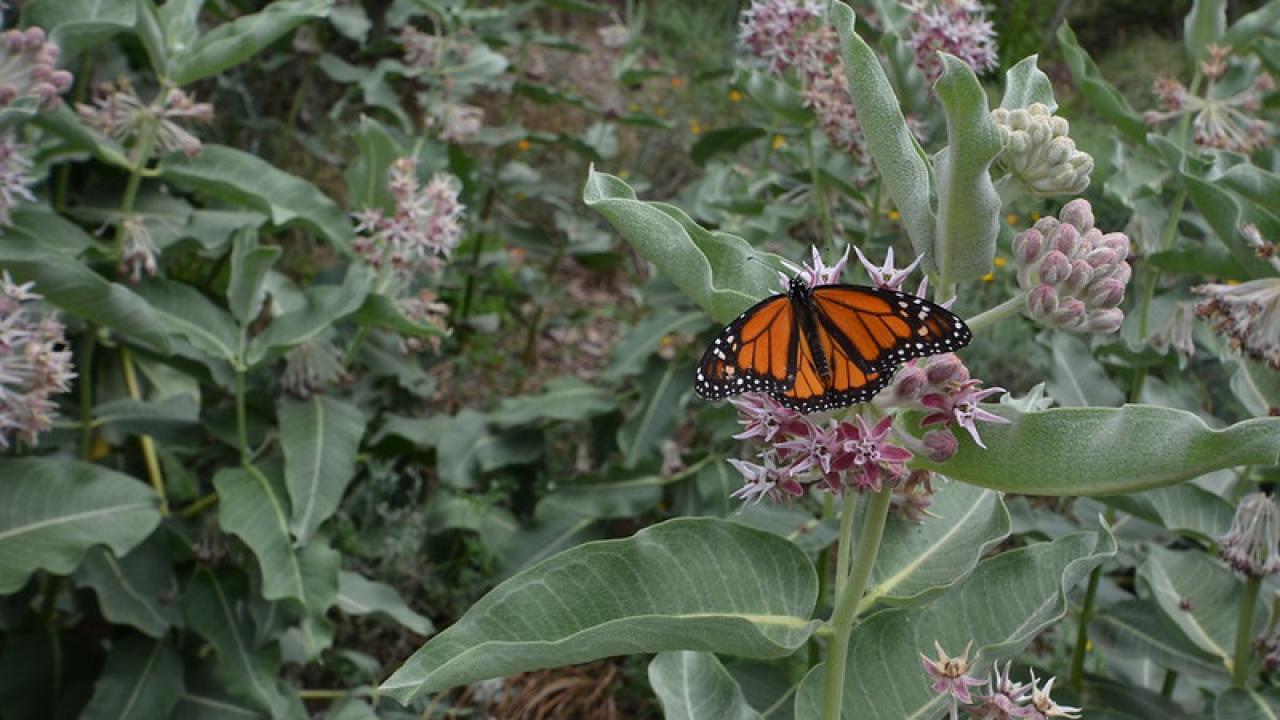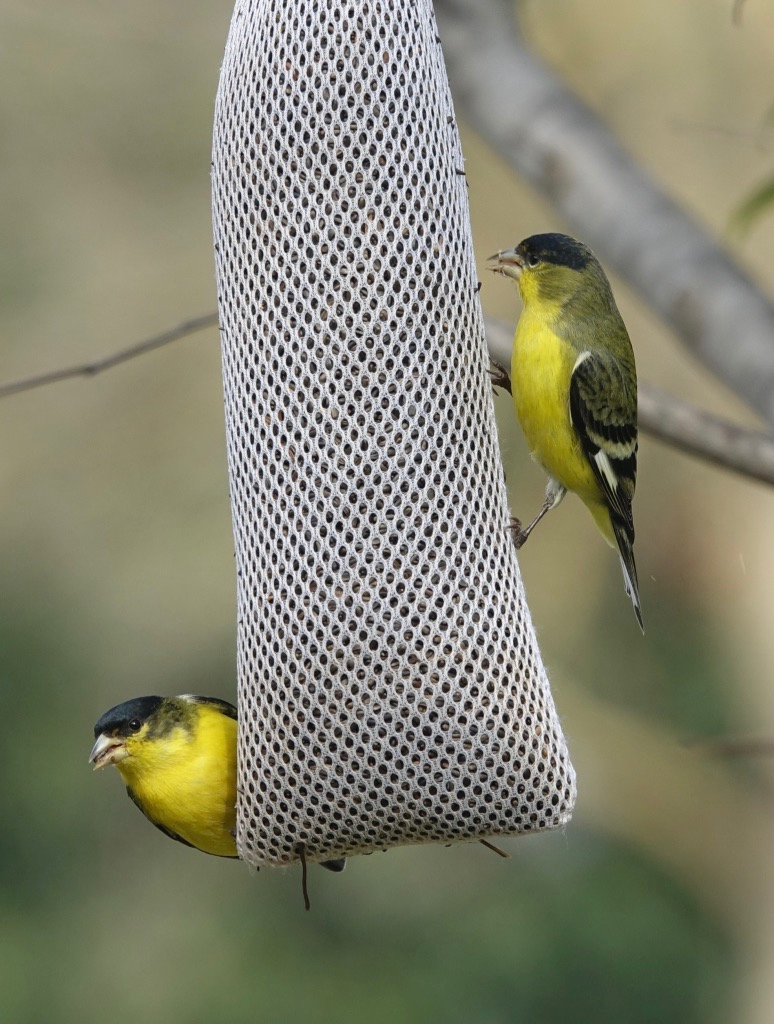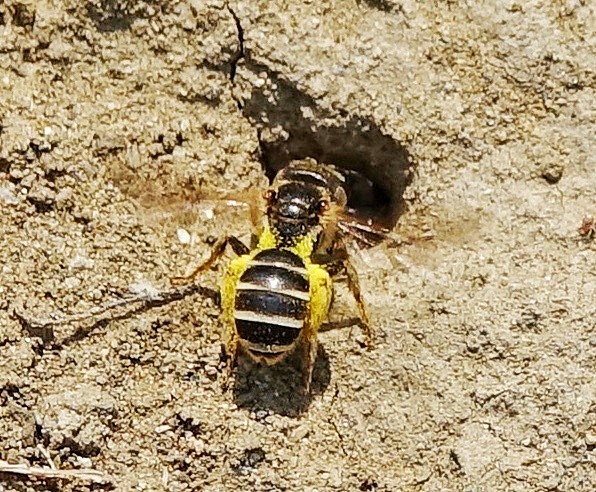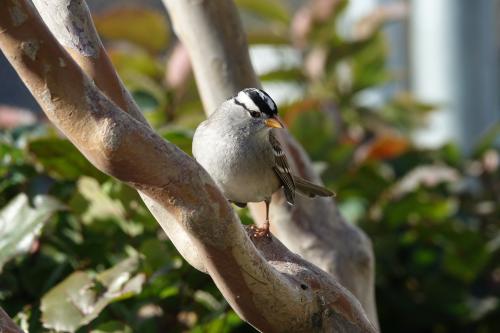
Make Habitat a Habit
Growing Natives to Support Natural Diversity

We are fortunate to live in California, with its wondrous diversity of flora and large natural areas that are not only places of beauty but also sources of spiritual and emotional refreshment. Sometimes, looking at the hills and open fields, it is difficult to appreciate that much of our flora is under threat. Expanding human populations and concurrent housing, commercial and corporate developments blossom into roads, sidewalks, buildings and non-native landscaping. We literally cover the earth with our creations, shrinking the space available for wild creatures to live.
Even in rural areas, agriculture fills the rich soils of the Valley floor with laser-leveled precision. Road edges are sprayed with herbicide to control weeds, erasing hedgerows and remnants of native habitat. On the other side of the fence, overgrazing causes erosion and disturbs oak regeneration. Invasive weeds thrive and move into wild areas, crowding out more delicate native species. We use lawns, ecologically equivalent to cornfields, to cover large areas where once there were complex meadows. And many of our gardens celebrate the world’s flora instead of our own.
In recent research, Arboretum staff found that our visitors miss having a “connection to nature” and value the garden we have created for the opportunity it gives them to experience the natural world. Our education programs focus on the interrelationships between the native flora and fauna, in the hope that as these ecological connections become more visible and more valued they will lead to awareness and action.
INSECT RELATIONSHIPS WITH CALIFORNIA NATIVE PLANTS

Native plants and native insects share many intricate and intriguing stories. Native milkweeds develop poisonous compounds detrimental to most insects, but monarch caterpillars have evolved the ability to eat these compounds, which then make the caterpillars distasteful to birds and protect them from predation. The beautiful pipevine swallowtail butterfly, frequently seen in the Arboretum in the summer months, has specialized to eat only California pipevine (Aristolochia californica), native along the banks of Putah Creek and other riparian areas. Our towering native oaks share their leaves and branches with the many gallforming insects that infest them. The insects inject their eggs into the tissues of the oak; in response, the oak forms galls (growths) that shelter and protect the larvae. Arboretum visitors are fascinated by the “oak apples” formed by the stem gall (Andricus quercuscalifornicus), which can grow as large as a baseball, and the jumping galls (Neuroteras saltatorium) which can be seen bouncing like peripatetic poppyseeds in large quantities along Arboretum paths in July and August.
Plants that produce nectar-rich flowers, such as toyon, California buckwheat, coyote brush, and redbud, provide many insects with immediate energy as well as pollen for food. A variety of pollinators and beneficial predators can be seen visiting them in season. In return, the plants depend upon these insects for successful pollination, seed set, and fruit production. Carpenter bees, common visitors on our California fuchsia flowers, are exceptions. These plump, shiny, “nectar-robbing” bees can be seen to bite through the base of the flower to steal the sweet liquid without pollinating, because their tongues are too short to access the nectar in a “legitimate” way.
Of the 1600 species of California bees, the vast majority are solitary rather than social like the familiar honeybee. We have seen turquoise-colored solitary bees emerging from tunnels on sandy bare banks in the Arboretum in summer, and some species also nest in cavities in trees and dead wood. Researchers have identified 65 native bee species that visit summer crops in our area and have found that native bees make up a high proportion of bee visits. Populations of these native bees, known to pollinate agricultural crops, provide us with an “insurance policy” if European honeybees fail.
Native bumblebees are a vital component of natural communities, and researchers have discovered their numbers are declining. Habitat fragmentation from urbanization and agriculture, introduction of disease organisms, and competition from non-native bees threaten bumblebees. Many insects are important contributors to ecological stability because they prey upon other insects, an important mechanism for keeping pest levels in balance. The adult forms of beneficial insects such as the syrphid or hover fly can be easily seen feeding on nectar and pollen. The larvae they produce will gobble up garden aphids and provide a natural form of pest control.
FOR THE BIRDS

Birds are another layer in the garden, providing color, movement, and sound as part of the ecological web. Pesky mistletoe infesting our walnuts feeds migrating cedar waxwings. Insect-eating warblers dart in and out of foliage. Above it all soars the rare and majestic Swainson’s hawk. At dusk we can hear the “who, who, who cooks for you” of the great horned owl, and by day we frequently see and hear northern flickers with their beautiful spotted plumage.
Insect-eating birds generally eat a wide variety of insects, and many birds considered seed- or fruit-eaters also regularly include insects in their diet. Others that are largely insectivorous, like flycatchers and swallows, may eat fruit or nectar during migration. Leaf-gleaners (warblers), bark-gleaners (creepers and nuthatches), and wood and bark probers (woodpeckers) inhabit different niches in trees and shrubs and all help keep insect pest populations under control. Constantly moving hummingbirds specialize on nectar but also eat many insects.
Some of the same native plants that support native insects in spring, like native roses, toyon, red-stem dogwood, and elderberry, also provide fruits for birds in fall. Large trees like pines, sycamores and poplars provide seed and roosting sites, while oaks provide a virtual resort of food, shelter, and nesting sites. Acorn woodpeckers, jays, nuthatches and mourning doves feed on oak acorns and the insects attracted to them.
LESSONS FOR THE GARDENER

Learning about the wildlife that inhabits native and constructed landscapes demonstrates to us that diversity feeds stability. Native animals have evolved in mutual relationships with native plants, and threats to plants and the complex habitat they create have repercussions for all.
Habitat gardening means thinking of our gardens as “pieces of nature’s quilt” and renovating them with wildlife in mind. If enough people embrace this idea, we can create habitat corridors between larger natural areas that allow birds and insects to migrate and survive in a changing environment. If we garden with habitat in mind, our patch of earth can contribute to a more complex and stable environmental future for all.
